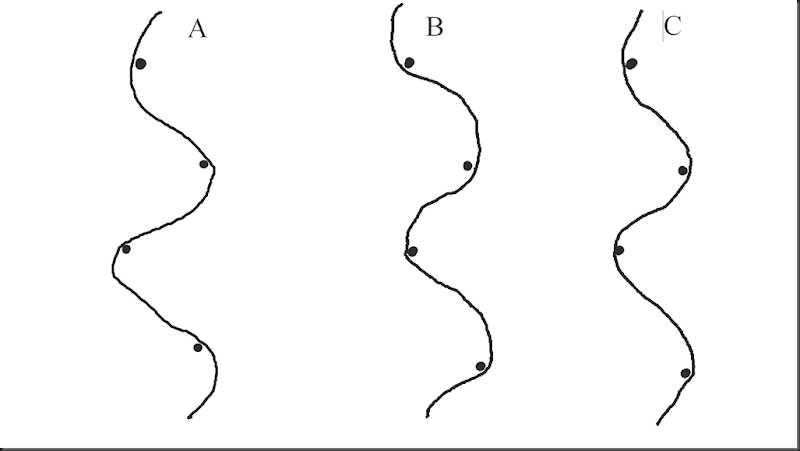Perpendicularity
During our warm up run I decided to try to help both Alp and Lal get off the backs of their ski boots. Skating should achieve this but they simply don’t have enough time for that to work so a more direct approach is necessary. The main reason for people becoming glued to the backs of the boots is that they are trying to keep their bodies vertical (in relation to gravity). When skiing we need to adjust the body constantly to be perpendicular to the slope. This was explained using my ski poles to show the relationships – so that when our skis point downhill we must come forwards so as to remain perpendicular to the skis and slope. Just moving the body downhill at the start of the turn contributes to perpendicularity when the skis start to come around. Just as an exercise we all leaned hard forwards in the ski boots, hanging over the fronts of the skis while skiing – to show that there was no reason to fear moving forwards. In fact the only way to use the entire front half of the ski is through being able to be perpendicular. Lal especially tends to only use the back half of her skis – which is why she appears to be so tense. In the race course the idea is to focus on the body and technique first and foremost. Alp had done a good job of that yesterday so now everyone had to make an effort. Lal improved her time to 41.2 seconds and Kerim to 36.93. Alp was slower than yesterday – for reasons we will look at shortly.
Line
Other than technique the main goal in slalom today was to learn about “line”. In the diagram below there are three lines. Initially everyone was taking line “A” – going directly to the pole and turning late after the pole. This is disasterous. The goal for today was to manage line “B” where the turn is made beneath the pole and the line remains high then drops down directly at the outside of the next pole. This is still a slow line but it avoids problems and permits good technique to be used and developed. Alp messed up only because he reverted to braking as he passed beneath the poles. Lal didn’t seem to manage to change her line significantly and only Kerim seemed to both understand and manage to make an obvious change. Line “C” is the ideal racing line where the apex of the turn is to the outside of the poles – not above or below the poles. The “C” timing is also used for difficult snow off piste or travelling fast over bumpy terrain so it is very useful in general skiing and makes skiing far safer and more in control. 
The exercises and slalom took up most of our time and left one hour to get up to the top of the Bellevarde and to ski down the Face (Then get up to the top of Solaise for lunch). The idea of skiing the Face caused some anxiety initially – but everyone managed without incident and we skied the whole slope non-stop – the children following my line. Before lunch we had some time to start looking at more technique.
Angulation
Tomorrow we will spend more time on this because lack of “angulation” is what generally makes taking a good line in slalom impossible and also makes it hard work to ski steep pistes in control. Each skier in turn stood with the skis across the hill and extended the two ski poles towards me so I could pull against them. With the bottom turned uphill during the “pulling” an angle is created at the hips and a strong resistance can be generated. The idea is for each one to feel exactly what it should feel like as forces build up during the second half of a turn. We need good body position during turning to allow the skis to direct us across the hill. Part of the problem in slalom was that nobody really knew how to do this and so they all ended up skidding down the hill to the next pole and consequently getting later and later in each consecutive turn. We will work properly on this tomorrow.
